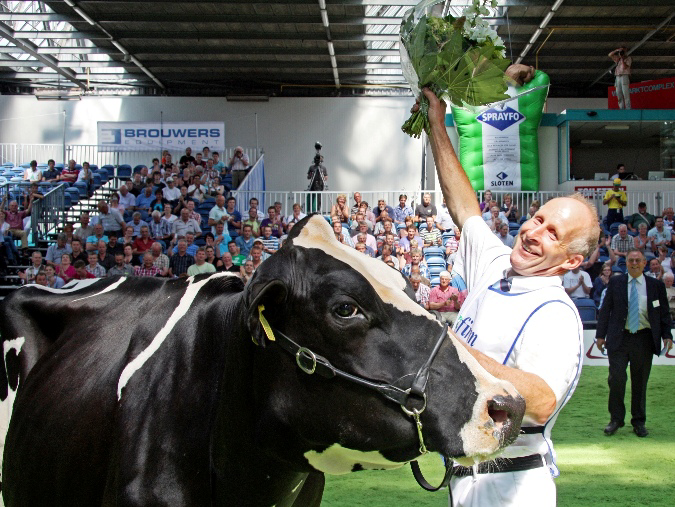Life start sets life performance

A calf’s birth takes place during an important growth stage. In the first two months of life, essential organs develop from premature into a functional unit. This article explains how calves can achieve a high growth rate in the pre-weaning phase.
By G.J. Klaassen, S.M.G. Rouwers and E. van der Gaast at Sloten, the Netherlands
The nutrition intake by calves is especially influential in its life start, as it fuels elementary development of organs like heart, lungs, intestines and udder tissue of the young animal. There have been a lot of discussions about metabolic programming of calves by Dr. Kunz, Dr. Sanftleben and Prof. Kaske in Germany. Metabolic programming is defined as a nutritional intrauterine and early postnatal stimulus or damage at a critical development period with long-lasting significance. Growth, milk yield and fertility – the decisive parameters for the productivity of ruminants – are influenced not only by genetic factors, but also by epigenetics or growth conditions. Metabolic programming has a remarkable impact on ruminants, besides the large differences of metabolic systems between ruminants and monogastric species. Especially during the first weeks of life, an adequate supply of nutrients is pivotal.
Nutrient intake from milk replacer
Recent studies suggest that nutrient intake from milk replacer during the pre-weaning period alters the phenotypic expression for milk yield. Soberon and others investigated the relationship between nutrient intake from milk replacer and pre- and post-weaning growth rate with lactation performance in 1,244 heifers from the Cornell University dairy herd and 624 heifers from a commercial farm during the first three lactations. The average growth rate before weaning was 820 grams/calf/day at the Cornell farm and 660 g/calf/day at the commercial farm. Among the two herds, pre-weaning average daily gain accounted for 22% of the variation in first-lactation milk yield and was closely correlated with first-lactation milk yield.
Effect of intensive rearing on milk production
A number of studies have been carried out to investigate the effect of intensive rearing of calves compared to the traditional restricted feeding of pre-weaning calves on milk production in the first lactation. Table 1 summarises the results, showing a large impact on milk production by intensive rearing. In all these studies the intensive feeding of pre-weaning calves resulted in an increased milk production between 340 and 1,330 kg extra compared to calves with restricted feeding. On average milk production was increased with 908 kg by intensive rearing or 6.7 kg milk per gram extra daily gain before weaning.
Effect of intensive rearing on organ development
Researchers in 1980s found that above three quarters of calves’ organ development takes place during the first 50 days. A study in 2005 showed a same level of development at udder parenchyma tissue, the precursor for the milk producing tissue, in the first two months. In 2011, researchers at Cornell University examined the effects of pre-weaning nutrient intake on different organs. The study brought an interesting finding – mammary parenchyma showed the greatest response to increased energy intake among other organs. The mammary parenchyma of enhanced calves weighed 5.9 times more than the parenchyma of control calves.
Achieving the best growth
Growth and health in the first two months are essential for the expression of the calf’s genetic potential. In practice, however, we just measure a moderate to average growth on most dairy farms. The gap was recognisable but an unanswered query, thus this green field became the fundament for the Sprayfo Life Start Concept. What can the dairy farmers do to achieve the best growth in the first two months? During the trials at Nutreco Calf Research Centre, remarkable differences in growth were found (Table 2). There are obvious differences between an average growth rate and the results of the best trials, which indicates potential room for improvement. A calf rearing concept was presented which gives farmers the opportunity to reach the best growth; 20 kg in the first month.
How much growth can be achieved before weaning a dairy calf? To answer these questions, the effect of intensive rearing schedules was investigated compared to a standard feeding schedule of calf milk replacer (CMR) on growth rate before weaning. Table 3 shows the results of two experiments conducted at Nutreco Calf Research Centre with a concentration of 145 g/litre (1:6). The calves for the experiments were bought at an age of minimum 14 days old.
Calf rearing trial R817 and R841 both showed that a higher CMR intake was not at the expense of the calf starter intake. The Life Start schedule with 45 kg of skimmed milk-based CMR in 9 weeks in trial R841 seemed to give the best results compared to a standard feeding scheme of 35 kg and is used in practice as the Life Start schedule. Feeding 10 kg extra of this CMR increased the growth preweaning with 7.3 kg (+15%).
The growth advantage also remained after weaning. Several experiments have been carried out to find the optimal feeding programme for maximum growth in the first two months.
The results of calf rearing trials, undertaken at the Institute for Animal Production in Dummerstorf, Germany, are given in Table 4. The best growth was seen in the 2012 calf trial, with a high concentration of 167 g/litre (1:5) milk replacer, in total feeding 8 litres milk per calf per day. In the first two weeks the milk was fed three times a day.
The growth potential of calves in the first six weeks was significant. Live weight was about 20% higher compared to previous calf trials at the Institute for Animal production in Dummerstorf and daily weight gain was even more than 50% higher.
Three times a day
The results of calf trials suggest a higher growth rate preweaning by feeding a concentration of 150-170 g/litre compared to 125 g/litre in combination with more milk. The Life Start sets Life Performance concept can be achieved with a high-quality calf milk replacer. The energy requirement of the young calf, in the beginning, is fulfilled by feeding calf milk replacer because the rumen is not yet developed. A higher amount of CMR must be fed especially in the first month when the consumption of calf starter and roughage is still low. The trial also showed that the intensive feeding of calf milk replacer did not have a suppressing effect on consumption of calf starter and roughage. The optimal frequency of feeding CMR is considered as three times a day in the first two or three weeks.
References are available on request.
Join 26,000+ subscribers
Subscribe to our newsletter to stay updated about all the need-to-know content in the feed sector, three times a week. Beheer
Beheer









 WP Admin
WP Admin  Bewerk bericht
Bewerk bericht